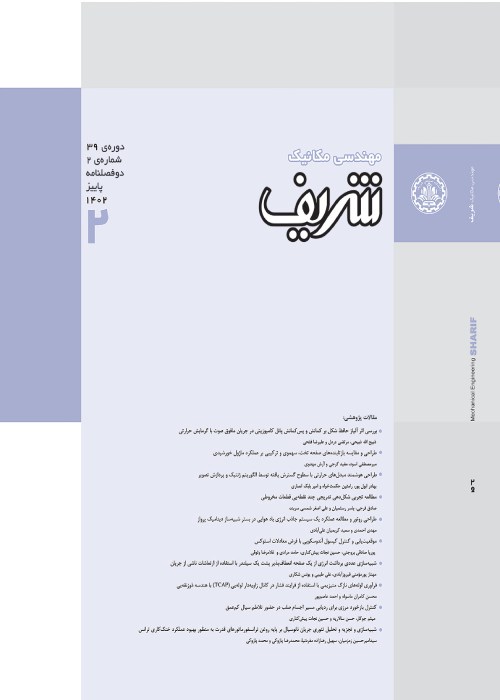THE PERFORMANCE OF RIGID POLYURETHANE FOAMS IN DAMAGE MITIGATION OF STRUCTURES DUE TO THE IMPACT OF A SUPERSONIC PROJECTILE
In this paper, the performance of the rigid polyurethane (PU) foams used in composite armors to mitigate the impact pressure and energy of a projectile has been studied numerically through nite element methods. The armors of this study comprise two layers, namely, a metal layer and a PU-foam layer. A sophisticated FE-Model was developed to simulate the dynamic performance of the composite armor under the impact of a projectile using the software package ANSYS-Autodyn. The FEModel was veri ed with the results of a previous experimental study in which a projectile impacted a certain two-layer armor comprising a steel front face that was attached on a layer of PU-foam. The main objectives of this research study are to study the e ects of design parameters such as the thickness and density of the PU-foam and the impact velocity of the projectile (representing the strain rate) on the performance of a composite armor. To achieve the research objectives, PU-foams of di erent densities of 80, 160, 288 and 320 kg/m3, at six di erent thicknesses of 1.25, 2.5, 5, 7.5, 10 and 12.5 mm were modeled. Additionally, the armors were subjected to projectiles with di erent impact velocities of 400, 450, 509 and 550 m/s. Results of the FE-Analysis runs conducted in this paper indicate that the response mitigation of a composite armor is signi - cantly a ected by both the density and thickness of its PU-foam layer. For a given thickness of foam layer, it was observed from the FE-analysis runs that the optimum value for the foam-density that results in the maximum response mitigation is approximately 150 kg/m3. The impact pressure that is dissipated by a composite armor is signi cantly decreased as the foam-density diverts from its optimal value. For a given foam-density, it was found that the response mitigation of the armor was improved with an increase in the thickness of the foam layer. For the composite armors investigated in this study, the rate of improvement in the response mitigation with increased foam-layer thickness was found to be very slow for the thickness values beyond 5 mm. The impact velocity of the projectile, as an indicator of strain rate, was also investigated in this paper. The dynamic response of foam layers of relatively lower thickness and density was found to be more sensitive to the variations of strain rate.
- حق عضویت دریافتی صرف حمایت از نشریات عضو و نگهداری، تکمیل و توسعه مگیران میشود.
- پرداخت حق اشتراک و دانلود مقالات اجازه بازنشر آن در سایر رسانههای چاپی و دیجیتال را به کاربر نمیدهد.



